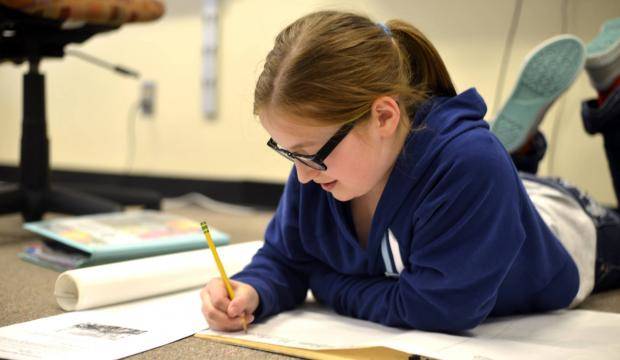April marks the first full year of the Kenai Peninsula Borough School District’s partnership with Education Elements, the technology group helping schools to implement personalized learning in classrooms across the district.
Schools have been adopting personalized learning in waves, with wave one schools beginning their work in May 2017 and wave three schools, including Kenai Central and Soldotna High School, beginning their work this month.
“I think our biggest success right now is in our wave one schools,” said John Pothast, the director of elementary and secondary education in the district and a guiding force behind the adoption of personalized learning. “We’ve gotten through most of the process and that’s culminated in learning walks.”
The learning walks, he said, take place in wave one schools, which included many of the larger elementary schools in the district such as Nikiski North Star. Administrators and representatives from the technology partner Education Elements walked through the schools and give feedback on each school’s adoption of personalized learning.
“The success that we’ve had and the feedback that we’ve gotten from the principals and Education Elements is that we have some really cool things going on in the school and a lot of good personalized learning,” Pothast said.
Pothast, who was on many of the learning walks, said there are a multitude of things to be aware of including the four core principals driving personalized learning — targeted instruction, data driven decisions, flexibility and student reflection and ownership.
Targeted instruction, Pothast said, focuses more individually where students are.
“In a class of 25 kids, you’ve got 25 different skill levels and different areas when it comes to, say dividing fractions,” he said. “Then the second core is using data, which is making decisions with good data and good information to base our instruction off of. Then, using flexible content and tools is important, not just computers. It’s about leveraging technology.”
Pothast reiterated that personalized learning, although it utilizes technology and data well, is still focused on preserving the teacher in the classroom.
“We use technology and I would argue, and continue to argue, that in our world almost every one of our students has a device and is on the internet,” Pothast said. “This is part of our society and there are some good things out there that we should be using in technology… There is, though, an art to teaching that only a human being can do. Our district will never get to the part where we lose that relationship, that art, that human connection.”
The fourth core of personalized learning is student ownership which challenges students to reflect on their learning and their understanding of the lesson. Pothast said this has been a popular facet of the program in schools.
“Out of the core four it seemed the general trend was that one resonated with them,” Pothast said. “A lot of the schools looked at that as a challenge, something that intrigued them and forced them to think about how they could do better in that area. Responsibility is not just on the teacher standing in front of the classroom. We can provide it, but unless the student is engaged and has some of that ownership, it may fall flat.”
With the first year of the personalized learning wrapping up, Pothast said the next step is to insure sustainability in the schools once the three years with Education Elements concludes.
“Most of the work that wave one schools now is facilitating the personalized learning process by ourselves, to give the support to the schools on our own,” Pothast said.
Pothast expects that personalized learning will reach every classroom within three years, with time set aside to focus on training administrators at a district level to continue including personalized learning in professional development in the future.
Reach Kat Sorensen at ksorensen@peninsulaclarion.com

